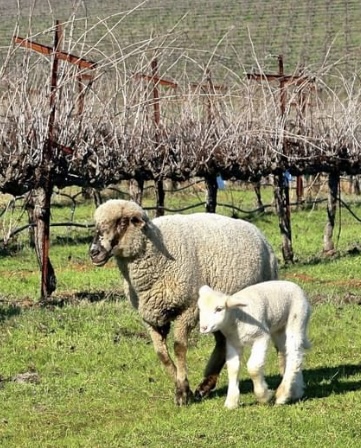Are there references to Nazareth, in Christian literature, being a site for grapes to be destined for wine libations in temple sacrifices?
1
vote
0
answers
63
views
Whether, or not, grapes destined for temple sacrificial offerings were grown in Nazareth is similar to the question of whether sacrificial sheep were raised in the area of Bethlehem.
It has a bearing on the teachings of Jesus and their spiritual meanings in that it functions in a typological sense to help illuminate the prophetic fulfillment of Jesus as the paschal "lamb of God" and the "vine" that represents Israel.
Did Jesus grow up in a town where wine grapes were grown that were destined for temple sacrificial libations? If so, it would impact Christian devotional reflections on Jesus' parable of the vine and the branches.
In two different places on *Stack Exchange* I have inquired about where certain locations, mentioned in the Mishnah, are in modern times. Contained in the Mishnah are exact locations where wine grapes destined for temple sacrifices were located. This quote from Asaph Goor, in reference to those specific locations in which sacrificial wine grape growing took place, got me interested in the subject:
> The Mishna also (Menahot, 8, 6) points to the regions where the best wine-making grapes were grown: ‘Kerutim and Hatoulim were alpha (first class) for wine (both are points in Judaea); second to them are Beit-Rima and Beit-Lavan in the mountains of Samaria and Kfar Signa in the valley’ (in Lower Galilee).
Where can these regions be found on a map? I have asked it at Judaism.SE and also the History section .
In one of the responses , LаngLаngС writes (emphasis added):
> Beit Lavan–ּבית ָלָבן:ֵ Some identify this as the Arab village Luban,
> located near Beit Rima. This region was home to an extensive
> production of wine, even in later eras. **Others suggest this is the
> city of Nazareth located in the Galilee, which was known in ancient
> times as Beit Lavan.**
I have not been able to verify that Nazareth was ever called Beit Lavan (a second class place for sacrificial wine grape growing). And considering it is not in mountains of Samaria, as Asaph Goor suggests, it is rather odd for it to be Nazareth. Still, a devotional question comes up, "Is there is any church literature that contains such a suggestion?
What makes this question especially provocative is that the first century writers, Columella (R.R.4.19) and Pliny (N.H. 17.178-81) describe high end trellis systems that utilized reeds for supporting the vines along with high wooden posts and one cross bar per post. They describe how the poles should be at least 4’ tall, but not more than 7’ tall. This was likely done to allow sheep to graze underneath - e.g. nibbling at suckers, doing leaf pruning, adding fertilizer and working the cover crops on the ground.


Asked by Jess
(3720 rep)
Jul 26, 2022, 06:07 PM
Last activity: Jul 27, 2022, 08:58 PM
Last activity: Jul 27, 2022, 08:58 PM